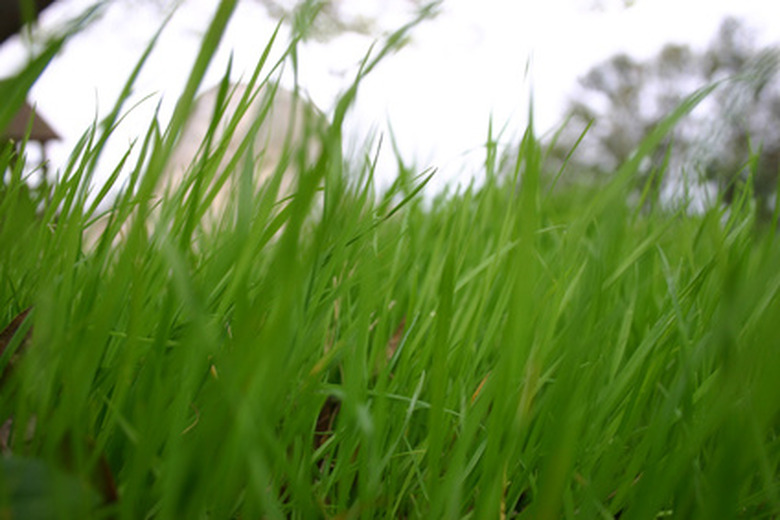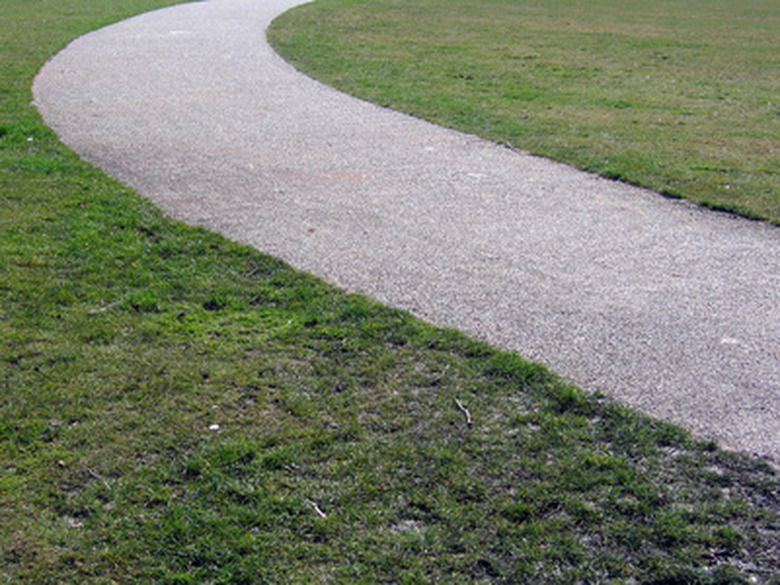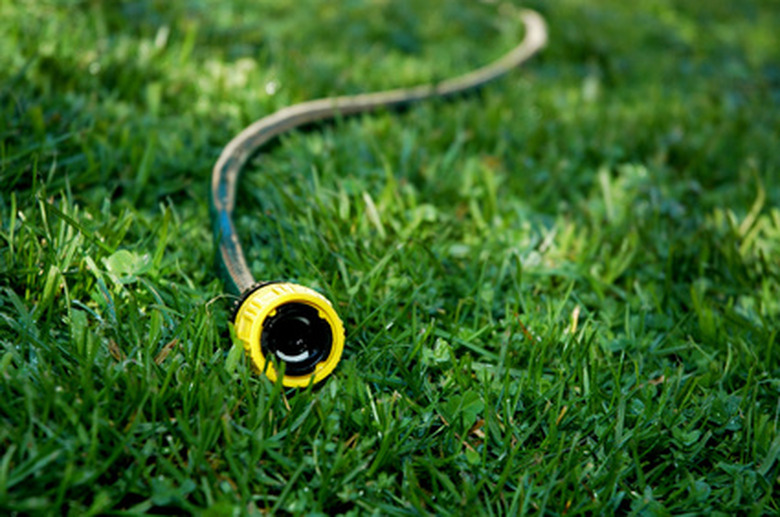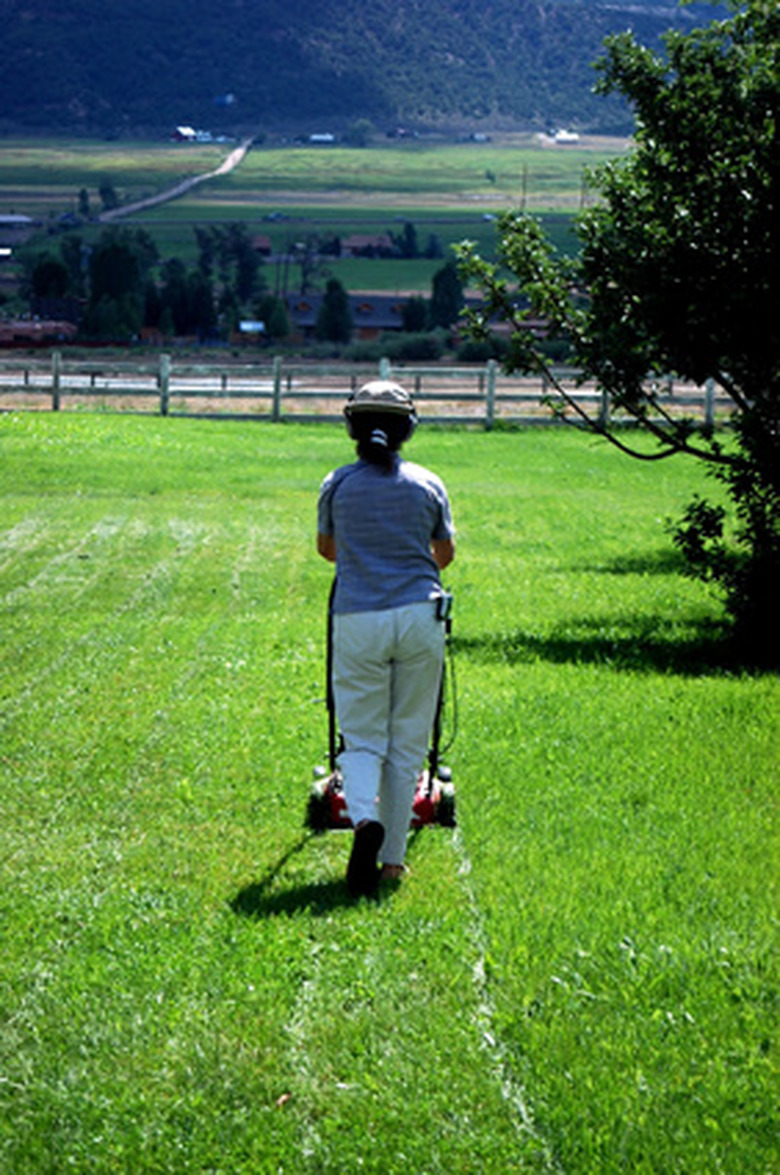Tall Fescue Vs. Bluegrass
Kentucky bluegrass (Poa pratensis) was once the reigning king of neighborhood lawns, and rightly so. The soft, dense turf and cool green color created a living carpet under bare feet in summertime. However, researchers developed tough, drought-resistant tall fescue (Festuca arundinacea) roughly 50 years ago. Although the first generations of tall fescue were coarse and unsuitable for lawns, recent improved varieties are threatening to dethrone Kentucky bluegrass as the king of the backyard.
Appearance
Both lawns create a dense turf and have a similar emerald green color. Tall fescue's wide, relatively large blades give lawns a more textured appearance than the manicured appearance of bluegrass. Bluegrass lawns have fine, narrow blades and are slightly softer underfoot than the stiffer tall fescue. In shady areas, Kentucky bluegrass lawns become thin and patchy, unlike tall fescue lawns. Tall fescue lawns also stay green longer during dry seasons.
- Kentucky bluegrass (Poa pratensis) was once the reigning king of neighborhood lawns, and rightly so.
- In shady areas, Kentucky bluegrass lawns become thin and patchy, unlike tall fescue lawns.
Traffic
Because their blades are more firm than the finely textured bluegrass blades, fescue lawns hold up well against children, pets and regular foot traffic. Bluegrass lawns do not usually tolerate heavy, constant use. However, Kentucky bluegrass spreads through rhizomes and fills in temporarily damaged areas faster than tall fescue. Both grass types are suitable for average backyard use.
Water Needs
Tall fescue's roots grow roughly 15 inches deep, more than twice the 5- to 6-inch depth of Kentucky bluegrass roots. Pam Sherratt, from Ohio State University Extension, wrote, "This allows the grass to access water at depths Kentucky bluegrass can't reach, remaining green during hot summers long after Kentucky bluegrass goes dormant." Carl Wilson, of Colorado State University Extension, stated that tall fescue lawns require about half the water that Kentucky bluegrass lawns need.
Maintenance
Although most lawns create thatch, the horizontal rhizomes of bluegrass build thatch more quickly than tall fescue and require de-thatching more often. Thatch thicker than 1/2 inch provides cover for insects, encourages root-destroying white grubs and may even become hydrophobic.
- Because their blades are more firm than the finely textured bluegrass blades, fescue lawns hold up well against children, pets and regular foot traffic.
- Although most lawns create thatch, the horizontal rhizomes of bluegrass build thatch more quickly than tall fescue and require de-thatching more often.
Although tall fescue does not create thatch as quickly as Kentucky bluegrass, it does have problems recovering from damage. Tall fescue lawns become clumpy and uneven after summer drought or other environmental stresses. Kentucky bluegrass spreads into damaged areas. In contrast, tall fescue lawns remain spotty and often require reseeding.
Kentucky bluegrass, due to its higher fertilizer and water needs, requires slightly more frequent mowing than tall fescue. The University of Missouri suggests keeping Kentucky bluegrass 2 to 3 inches tall, roughly 1 inch shorter than tall fescue's recommended height.
Diseases and Pests
Both tall fescue and Kentucky bluegrass are vulnerable to insect damage, but tall fescue contains plant-dwelling beneficial fungi, or endophytes, that increase the turf's resistance to insects. However, tall fescue is vulnerable to brown patch, a fungal disease.
- Although tall fescue does not create thatch as quickly as Kentucky bluegrass, it does have problems recovering from damage.
- However, tall fescue is vulnerable to brown patch, a fungal disease.



